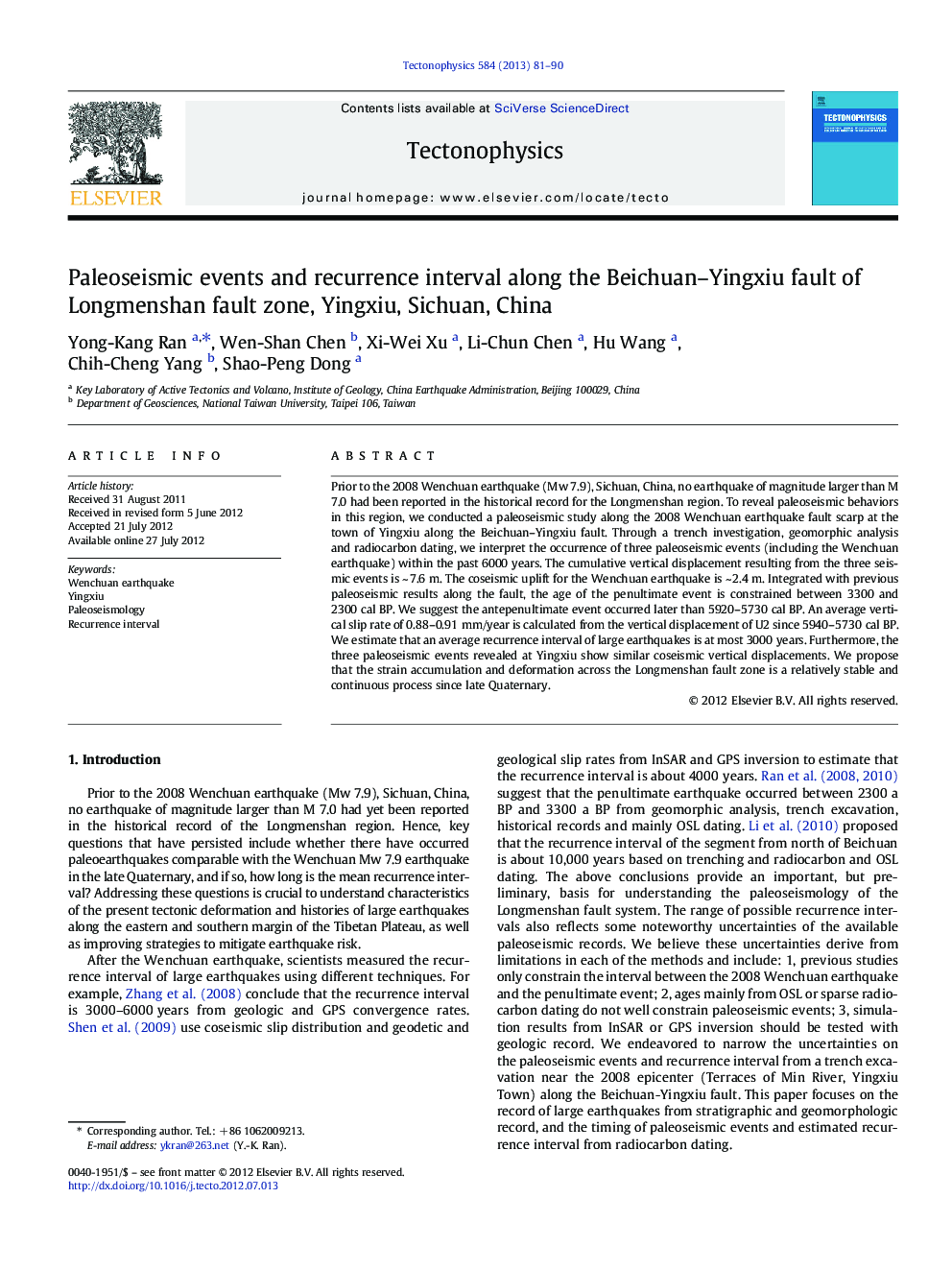| Article ID | Journal | Published Year | Pages | File Type |
|---|---|---|---|---|
| 4692436 | Tectonophysics | 2013 | 10 Pages |
Prior to the 2008 Wenchuan earthquake (Mw 7.9), Sichuan, China, no earthquake of magnitude larger than M 7.0 had been reported in the historical record for the Longmenshan region. To reveal paleoseismic behaviors in this region, we conducted a paleoseismic study along the 2008 Wenchuan earthquake fault scarp at the town of Yingxiu along the Beichuan–Yingxiu fault. Through a trench investigation, geomorphic analysis and radiocarbon dating, we interpret the occurrence of three paleoseismic events (including the Wenchuan earthquake) within the past 6000 years. The cumulative vertical displacement resulting from the three seismic events is ~ 7.6 m. The coseismic uplift for the Wenchuan earthquake is ~ 2.4 m. Integrated with previous paleoseismic results along the fault, the age of the penultimate event is constrained between 3300 and 2300 cal BP. We suggest the antepenultimate event occurred later than 5920–5730 cal BP. An average vertical slip rate of 0.88–0.91 mm/year is calculated from the vertical displacement of U2 since 5940–5730 cal BP. We estimate that an average recurrence interval of large earthquakes is at most 3000 years. Furthermore, the three paleoseismic events revealed at Yingxiu show similar coseismic vertical displacements. We propose that the strain accumulation and deformation across the Longmenshan fault zone is a relatively stable and continuous process since late Quaternary.
► We present robust ages of three paleoearthquakes in the Longmenshan region. ► We narrow uncertainties on events from reliable radiocarbon ages and trench logs. ► Cumulative scarps of ~ 8 m on T2 are nearly three times of the coseismic scarp on T1.
